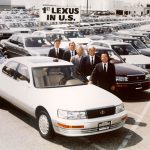High-performance cars have always been the dream of true car enthusiasts. And BMW, as the leading figure in the automotive industry, has the mission to embody and convey that passion. Let’s review the 40 memorable years of BMW M GmbH.
>>Chapter II: A shining star in the sports car world
Chapter III: The BMW M GmbH empire
Success followed success, turning BMW M GmbH into an empire, without a crown, but marking the letter M as the “most powerful letter”.
The achievement in SMG transmission technology
With regards to transmission, BMW M GmbH became the first automobile manufacturer in the world to introduce Sequential Manual Gearbox (SMG), providing unique technology on the M3. Based on the conventional M3 transmission, SMG activates the clutch when shifting – no need to press the clutch pedal, simply shift up or down using the paddle shifters. While some drivers were skeptical of this new technology from the start, SMG quickly made a boom in the market, with most other BMW M3 models equipped with SMG transmission before the end of production time.
In 1995, another M Power engine achieved a notable milestone. It was a 12-cylinder 6.0-liter engine based on the 750i engine, providing power for the winning McLaren sports car at the 24 Hour Race in Le Mans. Four valves, a titanium connecting rod, and an aluminum clutch helped deliver a maximum output of 600 horsepower. A few years later, in 1999, BMW achieved its greatest success with this engine, the BMW V12 brought home the overall victory at the legendary 24 Hour Race in Le Mans.
However, at this time, the engine is no longer the product of M GmbH. BMW Motorsport Ltd was established in the UK at the end of 1995, responsible for all activities related to BMW’s sports engines. Since then, M GmbH focuses only on three business areas: BMW M cars, BMW Individual, and BMW driving experience.
The “Muscle Twins”: M roadster and M coupe
The next sports car, proudly wearing the M emblem at the back, entered the market early in 1997. The M roadster two-seater convertible shines in every aspect, not just a fascinating combination of the Z3 roadster with the 321 horsepower M engine. For that time, this powerful and unique engine was also the highlight of the BMW Roadster lineup. And shortly after the M roadster, the M Coupe, a purebred sports car with the highest standards, was also equipped with the M3 engine and based on the M roadster, but possessed its own distinctive features. Therefore, the M coupe combines excellent agility and outstanding driving performance with a body that provides not only comfortable driving but also practical advantages. For example, two golf bags can fit snugly into the attractive rear compartment.
1998: M5 with 8-cylinder engine, 400 horsepower.
In 1998, BMW M GmbH engineers introduced the third-generation BMW M5, setting a completely new standard for dynamism. This is exactly why only the connoisseurs could speak about the new M5 from the outside. The front was redesigned with large air intakes, wide lightweight alloy wheels, and four famous exhaust pipes from the M roadster and M coupe.
For the first time, the heart of the M5 is a completely new 8-cylinder engine providing a maximum output of 300kW (400 horsepower) and a peak torque of around 500Nm. Like its predecessor, the new M5 is equipped with a highly precise and smooth 6-speed manual transmission.
2000: Third-generation M3 with exciting new design
For many years, BMW M engineers have set standards not only in engine technology but also in chassis and suspension systems, as evidenced by the third-generation M3. Introduced to the public in 2000, the M3 is equipped with double brakes, with floating brake discs that combine the advantages of better heat dissipation and longer service life compared to conventional systems. The new BMW M3 excels in all aspects: more powerful, better performance, more unique design. Based on simple numbers, this car has a power of 343 horsepower, torque of 365Nm, and can accelerate from 0-100km in 5.2 seconds.
A year later, the M3 gave up its road-going form and instead became a racing car. The M3 GTR made its name on the American Le Mans Series list with a 4.0-liter 8-cylinder engine under the hood for the first time. The racing car with its characteristic air intakes in the hood and powerful rear design proved superior on the American race track and won the championship in the GT class – a fitting reward to celebrate GmbH’s 30th birthday in 2002.
2003: The resurrection of the CSL
The development of a very special car began – the M3 CSL, three letters that speak volumes. The lightweight M3 Coupe, with its carbon-fiber roof, center console, and door panels, lighter rear window, and many other features were provided, only simple little things were removed. With a 360 horsepower engine, the CSL is an outstanding performance artist on narrow corners. Introduced in 2003, the CSL was brought to market and all 1,383 units were sold out in a matter of months.
2004: M5 with 10-cylinder engine and M6
Since the golden era, no year has passed without a famous M car appearing. In the fall of 2004, the new M5 caused a sensation after its predecessor broke production barriers at 20,000 units. This most luxurious 5 Series car was also simultaneously the most powerful car ever produced: 5.0-liter, 10-cylinder, 507 horsepower, 520 Nm torque. These figures emphasized the difference between a road-going car and a racing car like never before seen.
The performance values of the fourth-generation M5 once again redefine standards in the high-performance sports car segment. Power increased by 25% compared to the predecessor 8-cylinder engine – the M5 surpassed the magical 100 horsepower per liter milestone. Its specific performance, therefore, is at sports car level. The interaction between the V10 engine and the 7-speed SMG transmission allows performance far exceeding that of other cars. It takes only 4.7 seconds for this car to accelerate from 0-100km and just 15 seconds for the car to reach a speed of 200km/h.
Shortly after, the M6 appeared with the same engine. The suspension was further adjusted, and like the M3 CSL, this large coupé had a roof made from carbon fiber. Naturally, the M6 can also race faster than the manufacturer’s speed limit of 250km/h. Therefore, BMW provides a top speed increase along with driver training at the closed course.
2007: BMW’s first 8-cylinder M3
After 15 years, in 2007, a new engine in the new generation M3 replaced the prominent straight-six engine that had won “engine of the year” awards several times. It’s the first time an 8-cylinder engine is installed in this coupé, and the car is available on the market right after that. The new V8 engine, along with the 6-speed manual transmission, creates 420 horsepower from a displacement of 3,900 cc. About 80% of the maximum torque is 400 Nm at 6,500 rpm. Especially for coupé cars, engineers once again use lightweight materials.
Three decades after the first production of the product line was announced, BMW M GmbH delivered its 300,000th car in 2008. Meanwhile, BMW M GmbH’s vehicle portfolio expanded to nine models.
2009: Turbocharged engine returns
This meant that the expansion truly began to take off. The characteristic high performance of the cars produced by BMW M GmbH was first transferred to the segment of the BMW X models with the X5 M and X6 M in 2009. This development provided a high-performance, twin-turbo V8 engine tailored precisely to the characteristics of the two models. The M TwinPower engine with 555 horsepower was the first engine in the world to be equipped with an exhaust duct that comprehensively covers the entire range of cylinders and Twin Scroll Twin Turbo technology. The turbochargers and catalyst converters are positioned in the V space between cylinder banks. This configuration creates a self-developed response characteristic of M cars and ensures linear development as well as enabling the development of harmonious torque.
Also in the same year, BMW M GmbH developed a racing car based on the BMW M3 Coupe for customers with special demands for the performance characteristics of their cars. The model is also suitable for club sport and for racing in club sport events. The BMW M3 GTS is produced at the BMW M GmbH factory specifically for customer requirements. The changes aimed at the racing deployment in sports engines are reflected in the powertrain technology, chassis, body, and interior. The design principles and technical details originate directly from the 8-cylinder sports engine, with the displacement expanded to 4.4 liters and the power output increased to around 450 horsepower.
Today: A high price for high performance
In late 2010, BMW M GmbH once again expanded its product range and introduced the 1 Series M Coupé, a 340 horsepower car. The inline-6 engine with M TwinPower Turbo, along with direct fuel injection system, has an easy time with the lightweight muscle car. It’s obvious with the power-to-weight ratio of only 4.4kg/horsepower. A few months later, the new M5 appeared with the same engine – the 8-cylinder twin-turbo producing 560 horsepower with a top speed of 305km/h.
M and diesel engines
40 years after the first stones of the BMW M GmbH empire were laid, sports engineers shift their minds to a new project – the BMW M Performance Automobile project. This is an expansion of the model range with a clear focus on sporting performance, unrestricted everyday road capability, as well as superior efficiency. The new product portfolio has been launched with four models: the BMW M550d xDrive Saloon, BMW M550d xDrive Touring, BMW X5 M50d, and BMW X6 M50d. The heart of these cars is a new 6-cylinder inline diesel engine developed by three double-scroll turbochargers which provide output of up to 381 horsepower.
Ngoc Diep (TTTĐ)







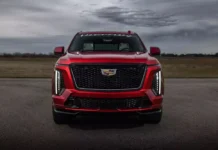

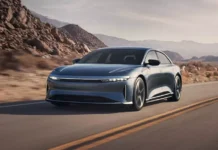


















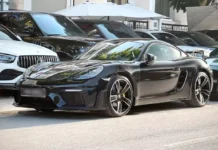

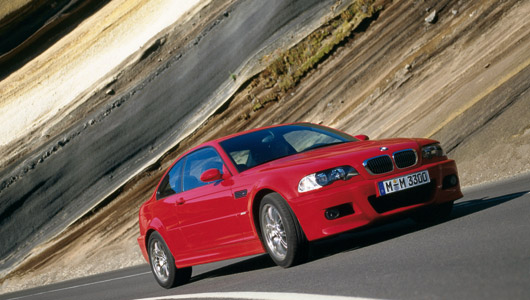
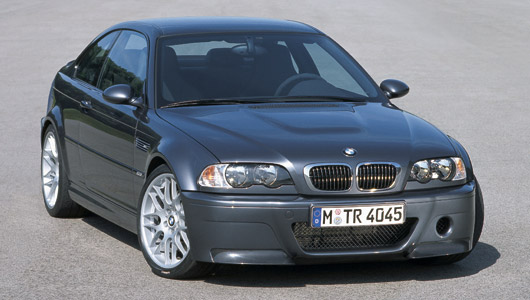

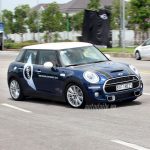

![[CAR REVIEW] The Newly Launched BMW iX3 in Vietnam: Compact, Practical, and Expensive](https://vnauto.net/wp-content/uploads/2023/10/xehay-bmwix3-01082023-9-150x150.jpg)

